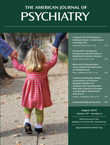Abstract
Objective
Posttraumatic stress disorder (PTSD) related to childhood abuse is associated with features of affect regulation and interpersonal disturbances that substantially contribute to impairment. Existing treatments do not address these problems or the difficulties they may pose in the exploration of trauma memories, an efficacious and frequently recommended approach to resolving PTSD. The authors evaluated the benefits and risks of a treatment combining an initial preparatory phase of skills training in affect and interpersonal regulation (STAIR) followed by exposure by comparing it against two control conditions: Supportive Counseling followed by Exposure (Support/Exposure) and skills training followed by Supportive Counseling (STAIR/Support).
Method
Participants were women with PTSD related to childhood abuse (N=104) who were randomly assigned to the STAIR/Exposure condition, Support/Exposure condition (exposure comparator), or STAIR/Support condition (skills comparator) and assessed at posttreatment, 3 months, and 6 months.
Results
The STAIR/Exposure group was more likely to achieve sustained and full PTSD remission relative to the exposure comparator, while the skills comparator condition fell in the middle (27% versus 13% versus 0%). STAIR/Exposure produced greater improvements in emotion regulation than the exposure comparator and greater improvements in interpersonal problems than both conditions. The STAIR/Exposure dropout rate was lower than the rate for the exposure comparator and similar to the rate for the skills comparator. There were significantly lower session-to-session PTSD symptoms during the exposure phase in the STAIR/Exposure condition than in the Support/Exposure condition. STAIR/Exposure was associated with fewer cases of PTSD worsening relative to both of the other two conditions.
Conclusions
For a PTSD population with chronic and early-life trauma, a phase-based skills-to-exposure treatment was associated with greater benefits and fewer adverse effects than treatments that excluded either skills training or exposure.



